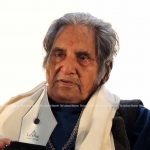Makar Sankranti
Til Gur Laddoo Udi Patang, Sankranti ki hui Umang
There is perpetuity of celebrations in Indian aestheticism and no wonder the onset of the New Year at India is also not deprived of delights and blessedness. Makar Sankranti marks the prominent inception of every year. It is celebrated usually on the 14th day of January and according to the Hindu calendar in the month of Magha. After this day the days start becoming longer & warmer, and thus the chillness of winter in on decline. It has also got immense astrological perspective and score. Although there are many convictions allied to this festival but the blooming spirit of Makar Sankranti makes it for all. In a big way it is the conviviality of Sesame sweets, flying kites and colourful fairs, but apart from this Makar Sankranti has got much more for Winter Zenith. It is celebrated in many distinctions in the states of India and Nepal. In Tamil Nadu it is called Pongal, in Assam it is celebrated as Magh Bihu and Bhogal Bihu, in Punjab and Haryana it is celebrated as Lohri festival, in Uttar Pradesh it is celebrated as Khichdi, in Bihar it is known as Til Sankranti or Khichdi festival and originally in the rest part of the country. Though extremely popular as Makar Sankranti, it is predominantly a harvest festival and is celebrated throughout India, from north to south and east to west.
The word Sankranti means movement and it falls every month in accordance with the twelve zodiac signs indicating the motion of Sun. Sun, which is idolized as the Universal Life Source, changes its celestial path to various zodiacs and the beginning of the duration stayed by the Sun in a zodiac is termed as Sankranti of that Zodiac. Amongst all the Sankranti, the first in the year that is Makar Sankranti is most salient. The movement of Sun is seen to be shifted in Tropic of Capricorn from Tropic of Cancer after 21st of December. In Astrology it is said that the Sun enters the Makar rashi or Capricorn on its celestial path in northward movement. The northward movement of Sun on its celestial sphere begins from Makar Sankranti and lasts till Karka Sankranti that is Cancer the fourth Zodiac sign. And from Karka Sankranti to Makar Sankranti the Sun moves southwards on its celestial sphere. These Northern and Southern motions of Sun are called ‘Uttarayana’ and ‘Dakshinayana’ in Sanskrit.
Apart from socio-geographical importance, Makar Sankranti also holds a historical and religious significance. As it is the festival of Sun, and he is regarded as the symbol of divinity, wealth and wisdom, the festival also holds an eternal meaning to it. The religious scripture, ‘Gita’ illustrates that six months of Uttarayana is the day time of deity. And, the six months of Dakshinayana is the night for Gods. It is believed that a person who scarifies his body in Uttarayana goes to ‘Krishna Lok’, whereas, the person who dies in Dakshinayana, has to be reborn on earth. In the epic of Mahabharata, Bhishma Pithama was given a blessing of wish death. Although lying on the bed of arrows, suffering hard with pain he did not sacrifice his life in the Dakshinayana, and waited for the Sun to go in Uttarayana. It is believed that on the day of Makar Sankranti, when sun entered in the Uttarayana, Bhishma Pithama discarded his body. The story of Gangawatran is also linked with Makar Sankranti. It is said that on the day of Makar Sankranti, Ganga stepped behind Bhagirath Muni and met the ocean. Conjunction of Ganga and ocean is the reason that millions of devotees take bath in Ganagasagar on Makar Sankranti. Capricorn is a sign of Saturn. It is said that on this day, Sun enters into the sign of Saturn and as per Vedas, Sun is father of Saturn and he goes to meet his son at his home. Saturn and Sun, both are might planets, whose auspicious blessings can make humans achieve great life and well-being. Hence, on the holy festival of Makar Sankranti people delight both the Sun and Saturn.
In Central India, Makar Sankranti is also known as Khichdi (Indian dish made from rice and lentils) because on this day the ritual to eat Khichdi, is generally followed. Seasonal crops become available. Veggies, Ghee and spices are used to make nourishing delightful Khichdi that is enjoyed by everyone. Winter leaves on with shiver producing cold, and springtime that brings with it the chance for all round health improvement. Therefore Khichdi is a special cuisine of Makar Sankranti.
And no festival in our nation could be imagined without their special Sweets. So has got Makar Sankranti its very special flavour of ìTilî and ìGurî (sesame and jaggery). Laddoos and chikkis are made from ìTilî and ìGurî and are shared amongst all. Since the festival falls in winter, eating of sesame and jaggery is considered of great benefits to health as they are warm foods and this Sankranti is also called Til Sankranti. Apart from sweets, til oil is also used for massaging purposes. Apart from numberless benefits of til the six major uses that shall be done on this day are – for Bathing, for Massaging, for Havan (sacred fire ceremony), Tarpan with til (oblations of water with Til), as food, and til is also donated. It is said that til emanates from Lord Vishnu’s body and its usage in any form washes away every sin. Sankranti period is held to be very auspicious and any good deeds during this time will intensify merits. Gifts of clothing, blankets etc., on this day could be a gracious contribution.
There is a one more very interesting ritual connected with Makar Sankranti – Kite-flying. Kite-flying in olden days was generally done in the early hours of the morning, when the sun’s rays were bright but not too harsh. Also, during kite-flying, the human body was exposed to the sun for long hours. The early morning sun is considered beneficial for the skin and body. Since winter is the time of infections and sickness, by basking into the sun, it is believed that the bacteria and viruses on the bodies are cleared and deceased. Hence kite flying is a fun way of sun basking. Not only the children but the Makar Sankranti Kite flying is momentous as families enjoy it fully. But somewhere in the tight scheduled livings this ordinance is lacking.
Makar Sankranti also marks the beginning of the Kumbh Mela in Uttar Pradesh while in South India one of the most austere and difficult pilgrimages of Shabrimala ends on this auspicious day. In the other parts of the country too, it is celebrated by taking a dip in the holy rivers flowing through states to get relieve of sins. This Magha Sankranti is also considered of much importance for Ganga snaan (holy bath in river Ganga) and Surya Puja (worshipping the sun). Not much reluctant to the urban areas but the small towns and rural areas yet see the hustle bustle of Makar Sankranti fairs that have their own distinct delights. Innumerable felicitous things start happening and thus marking the fortune of this festival and making it a great celebration in number of ways for the entire nation.
Shiwali Sethiya
Pursuing her engineering, the writer likes to write about Indian customs
and is a self-confessed travel lover.
(Published in The Lucknow Observer, Volume 2 Issue 22, Dated 05 January 2016)




